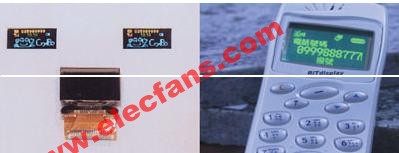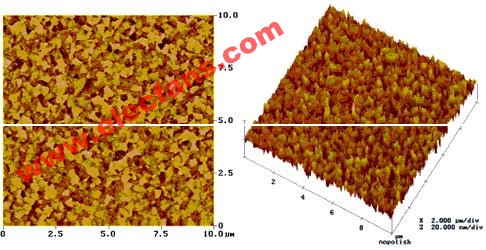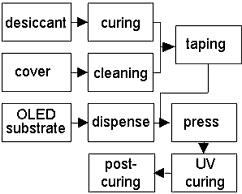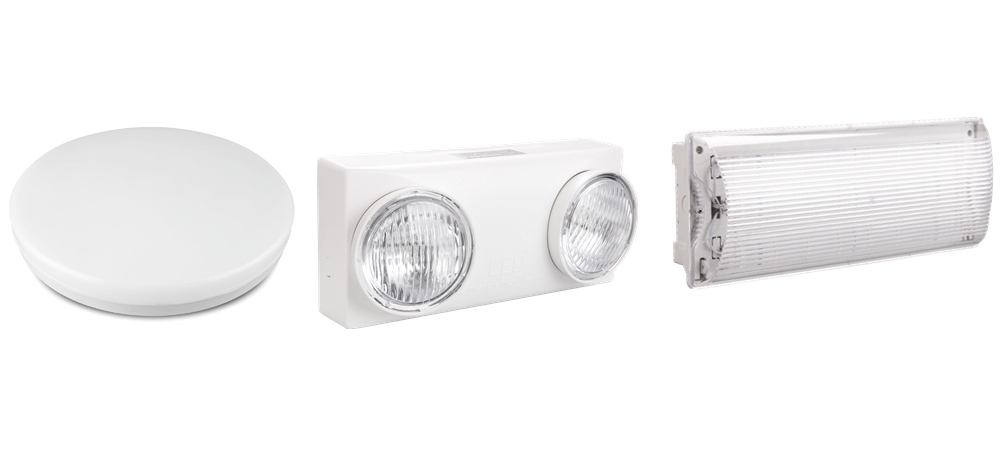What does oled mean? What is OLED
OLED (Organic light emitTIng diode) is a new generation of flat panel display technology following TFT-LCD (Thin film transistor liquid crystal display). It has the advantages of simple structure, no backlight for self-illumination, high contrast, thin thickness, wide viewing angle, fast response speed, can be used in flexible panels, and has a wide temperature range. In 1987, Dr. Deng Qingyun (CW Tang) of Kodak Company in the United States and others established OLED components and basic materials [1]. In 1996, Pioneer Japan became the first company to mass-produce this technology, and matched OLED panels with the car audio displays it produced. In recent years, due to its promising prospects, R & D teams in Japan, the United States, Europe, Taiwan, and South Korea have sprung up one after another, resulting in the increasingly mature organic light-emitting materials, the vigorous development of equipment manufacturers, and the continuous evolution of successive process technologies.
However, OLED technology is related to the current mature semiconductor, LCD, CD-R or even LED industry in terms of principles and processes, but it has its unique know-how; therefore, there are still many bottlenecks in the mass production of OLED . Taiwan Rhenpo Technology Co., Ltd. started to develop OLED related technologies in 1997, and successfully mass-produced OLED panels in 2000, becoming the second mass-produced OLED panel company in the world after the pioneer of Northeast Japan; Mono-color and area-color panels for export shipments are shown in Figure 1, and the yield and output have been improved. It has become the world's largest supplier of OLED panels.

[Figure 1: Regional colorful and single-color OLED panels of Rhenpo]
In the OLED process, the thickness of the organic film layer will affect the characteristics of the device. Generally speaking, the film thickness error must be less than 5 nanometers, which is a true nanotechnology. For example, the size of the third-generation substrate of a TFT-LCD flat panel display is generally defined as 550mm x 650mm. On this size of substrate, it is difficult to control such precise film thickness. The process of area substrate and the application of large area panel. Currently, OLED applications are mainly smaller mono-color and area-color display panels, such as: mobile phone main screen, mobile phone sub-screen, game console display, car audio screen and personal Digital assistant (PDA) display. Since the mass production process of OLED full-color has not yet reached maturity, small-size full-color OLED products are not expected to be launched until the second half of 2002. Because OLED is a self-luminous display, compared with the full-color LCD display of the same level, its visual performance is extremely excellent, and it has the opportunity to directly cut into full-color small-size high-end products, such as: digital cameras and handheld VCD (or DVD) players, As for the large panel (more than 13 inches), although there are R & D team to show samples, but mass production technology is still to be developed.
OLEDs can be divided into small molecules (usually called OLED) and polymers (usually called PLED) due to different light-emitting materials. The technology licenses are Eastman Kodak in the United States and CDT (Cambridge Display Technology) in the United Kingdom. Taiwan Ribao Technology Co., Ltd. is one of the few companies developing OLED and PLED at the same time. In this article, we will mainly introduce small molecule OLEDs. First, we will introduce the principles of OLEDs, followed by related key processes, and finally, we will introduce the current development direction of OLED technology.
Principle of OLED OLED components are composed of n-type organic materials, p-type organic materials, cathode metals and anode metals. Electrons (holes) are injected from the cathode (anode), pass through n-type (p-type) organic materials to the light-emitting layer (generally n-type materials), and emit light through recombination. Generally speaking, ITO elements are first sputtered on the glass substrate as the anode, and then p-type and n-type organic materials, and metal cathodes with low work function are sequentially deposited by vacuum thermal evaporation. Because organic materials are easy to interact with water vapor or oxygen, dark spots are generated and the components do not shine. Therefore, after the vacuum coating is completed, the device must be packaged in an environment free of moisture and oxygen.
Between the cathode metal and the anode ITO, the currently widely used device structure can generally be divided into 5 layers. As shown in Fig. 2, from the side close to the ITO are: a hole injection layer, a hole transport layer, a light emitting layer, an electron transport layer, and an electron injection layer. In the history of OLED device evolution, Kodak's OLED device, first published in 1987, is composed of two layers of organic materials, namely a hole transport layer and an electron transport layer. The hole transport layer is a p-type organic material, which is characterized by a high hole mobility, and its highest occupied molecular orbital (HOMO) is close to ITO, which can make holes from The energy barrier of ITO implanted into the organic layer is reduced.

[Figure 2: OLED structure diagram]
As for the electron transport layer, it is an n-type organic material, which is characterized by high electron mobility. When electrons pass from the electron transport layer to the hole electron transport layer interface, the lowest non-occupied molecular orbital of the electron transport layer The Lowest unoccupied molecule orbital (LUMO) is much higher than the LUMO of the hole transport layer. It is difficult for electrons to cross this energy barrier and enter the hole transport layer, so it is blocked at this interface. At this time, the holes are transferred from the hole transport layer to the vicinity of the interface and recombine with the electrons to generate excitons (Exciton), and Exciton will release energy in the form of light emission and non-light emission. For the general Fluorescence material system, only 25% of the electron-hole pairs are recombined in the form of light emission from the calculation of the selectivity (SelecTIon rule), and the remaining 75% of the energy is exothermic. Form dissipation. In recent years, phosphorescence (Phosphorescence) materials are being actively developed into a new generation of OLED materials [2]. Such materials can break the limit of selectivity to improve the internal quantum efficiency to nearly 100%.
In the two-layer device, the n-type organic material—that is, the electron transport layer—is also used as the light-emitting layer, and its emission wavelength is determined by the energy difference between HOMO and LUMO. However, a good electron transport layer-that is, a material with high electron mobility-is not necessarily a material with good light emission efficiency, so the current general practice is to dope organic transfer materials with high luminosity to electron transport The part of the layer close to the hole transport layer, also known as the light-emitting layer [3], has a volume ratio of about 1% to 3%. The development of doping technology is a key technology for enhancing the fluorescent quantum absorption rate of raw materials. Generally, the selected material is a dye with high fluorescent quantum absorption rate (Dye). Since the development of organic dyes originated from the dye laser in the 1970s to 1980s, the material system is complete, and the emission wavelength can cover the entire visible light region. The organic dye doped in the OLED device has a poor energy band, which is generally smaller than the energy band of its host (Host), so as to facilitate exciton energy transfer from the host to the dopant. However, because the dopant energy band is small, and electrically plays the role of a trap, the driving voltage rises if the doping layer is too thick; but if it is too thin, the energy is transferred from the host to the dopant The ratio will deteriorate, so the thickness of this layer must be optimized.
The metal material of the cathode has traditionally used a metal material (or alloy) with a low work function, such as a magnesium alloy, to facilitate electron injection from the cathode to the electron transport layer. In addition, a common practice is to introduce an electron injection layer. It is composed of an extremely thin low work function metal halide or oxide, such as LiF or Li2O, which can greatly reduce the energy barrier of the cathode and the electron transport layer [4] and reduce the driving voltage.
Since the HOMO value of the hole transport layer material still has a gap with ITO, in addition, the ITO anode may release oxygen after prolonged operation, and destroy the organic layer to produce dark spots. Therefore, a hole injection layer is inserted between the ITO and the hole transport layer, whose HOMO value is exactly between the ITO and the hole transport layer, which is conducive to hole injection into the OLED device, and the characteristics of its thin film can block the ITO Oxygen enters the OLED element to extend the life of the element.
OLED drive method
The driving method of OLED is divided into active driving (active driving) and passive driving (passive driving).
1. Passive drive (PM OLED)
It is divided into static drive circuit and dynamic drive circuit.
(1) Static driving method: On the organic light-emitting display device driven statically, generally the cathode of each organic electroluminescence pixel is connected together and the anode of each pixel is separately led out, which is the common cathode connection method. If a pixel emits light, as long as the difference between the voltage of the constant current source and the voltage of the cathode is greater than the pixel's luminous value, the pixel will emit light under the drive of the constant current source. At a negative voltage, it can be turned off in the reverse direction. However, cross-effects may occur when the image changes a lot, in order to avoid the form of communication. Static drive circuits are generally used to drive segment display screens.
⑵ Dynamic driving method: On the organic light-emitting display device driven dynamically, people make two electrodes of the pixel into a matrix structure, that is, the electrodes of the same nature of a horizontal group of display pixels are shared, and the same group of vertical display pixels are the same The other electrode of the nature is shared. If the pixel can be divided into N rows and M columns, there can be N row electrodes and M column electrodes. Rows and columns correspond to the two electrodes of the light-emitting pixel, respectively. That is the cathode and anode. In the process of actual circuit driving, pixels are to be lit row by row or to be lit column by row. A row-by-row scanning method is usually adopted. Row scanning is used, and the column electrodes are data electrodes. The implementation method is to cyclically apply pulses to the electrodes of each row, and at the same time, all column electrodes give the driving current pulses of the pixels of the row, thereby realizing the display of all pixels of a row. The pixels in this row are no longer in the same row or in the same column, and the reverse voltage is added to make it not display, so as to avoid the "cross effect". This kind of scanning is performed row by row, and the time required to scan all rows is called the frame period.
The selection time of each line in a frame is equal. Assuming that the number of scanning lines for one frame is N and the time for scanning one frame is 1, then the selection time occupied by one line is 1 / N of one frame time. This value is called the duty cycle coefficient. At the same current, an increase in the number of scanning lines will decrease the duty cycle, thereby causing an effective decrease in the current injection on the organic electroluminescent pixel in one frame, which reduces the display quality. Therefore, as the number of display pixels increases, in order to ensure the display quality, it is necessary to appropriately increase the driving current or use a dual-screen electrode mechanism to increase the duty cycle coefficient.
In addition to the cross-effect due to the common use of electrodes, the mechanism of the combination of positive and negative charge carriers in the organic electroluminescent display to form light makes any two light-emitting pixels, as long as any of the functional films that constitute their structure are directly connected together Yes, there may be crosstalk between the two light-emitting pixels, that is, one pixel emits light, and the other pixel may emit weak light. This phenomenon is mainly due to poor uniformity of the thickness of the organic functional film and poor lateral insulation of the film. From the driving point of view, in order to alleviate this adverse crosstalk, the reverse cut-off method is also an effective method.
Display with grayscale control: The grayscale of the display refers to the brightness level of black and white images from black to white. The more gray levels, the richer the image from black to white, and the clearer the details. Grayscale is a very important indicator for image display and colorization. The screens generally used for gray-scale display are mostly dot matrix display screens, and their drives are also mostly dynamic drives. Several methods for achieving gray-scale control are: control method, spatial gray-scale modulation, and time gray-scale modulation.
2. Active drive (AM OLED)
Each pixel of the active drive is equipped with a low-temperature polycrystalline silicon thin film transistor (LTP-Si TFT) with a switching function, and each pixel is equipped with a charge storage capacitor, the peripheral drive circuit and the display array are integrated On the same glass substrate. The same TFT structure as LCD cannot be used for OLED. This is because the LCD is driven by voltage, while the OLED relies on current drive, and its brightness is proportional to the amount of current. Therefore, in addition to the addressing TFT that performs ON / OFF switching operations, it is also necessary to have a sufficient on-resistance to allow sufficient current Low-density driver TFT.
Active driving is a static driving method with a storage effect and can be driven at 100% load. This driving is not limited by the number of scanning electrodes, and each pixel can be selectively adjusted independently.
Active driving has no duty cycle problem, driving is not limited by the number of scanning electrodes, and it is easy to achieve high brightness and high resolution.
Active driving can independently adjust the driving of grayscale for the red and blue pixels of brightness, which is more conducive to the realization of OLED colorization.
The drive circuit of the active matrix is ​​hidden in the display screen, making it easier to achieve integration and miniaturization. In addition, because the connection problem between the peripheral drive circuit and the screen is solved, this improves the yield and reliability to a certain extent.
3. Comparison between Active and Passive Passive active instantaneous high-density light emission (dynamic drive / selective) continuous light emission (steady state drive)
Design of TFT driver circuit with additional IC chip outside the panel / Built-in film driver IC
Line-by-line scanning line step-by-step erasure data gradation control is easy to form organic EL picture pixels on TFT substrates Low cost / high voltage drive low voltage drive / low power consumption / high cost design changes are easy and short delivery time Simple) Long life of light-emitting components (complex manufacturing process)
Simple matrix driver + OLED LTPS TFT + OLED
Edit the seventh section of this paragraph. The advantages and disadvantages of OLED 1. The advantages of OLED 1. The thickness can be less than 1 mm, only 1/3 of the LCD screen, and the weight is lighter;
2. The solid-state mechanism has no liquid substances, so the seismic performance is better, and it is not afraid of falling;
3. There is almost no problem with the viewing angle. Even when viewed from a large viewing angle, the picture is still not distorted;
4. The response time is one-thousandth of LCD, and there will be no smearing phenomenon when displaying moving pictures;
5. The low temperature characteristic is good, it can still display normally at minus 40 degrees, but the LCD cannot do it;
6. The manufacturing process is simple and the cost is lower;
7. Higher luminous efficiency and lower energy consumption than LCD;
8. It can be manufactured on substrates of different materials, and can be made into a flexible display that can be bent.
Second, the shortcomings of OLED 1. The lifespan is usually only 5000 hours, which is lower than the LCD lifespan of at least 10,000 hours;
2. Mass production of large-size screens cannot be achieved, so it is currently only applicable to portable digital products;
3. There is a problem of insufficient color purity, and it is not easy to display bright and rich colors.
OLED related key processes Indium tin oxide (ITO) substrate pretreatment (1) ITO surface flatness ITO has been widely used in commercial display panel manufacturing, which has the advantages of high transmittance, low resistivity and high work function. In general, ITO manufactured by RF sputtering is susceptible to poor process control factors, resulting in uneven surface, which in turn produces sharp substances or protrusions on the surface. In addition, the high temperature calcination and recrystallization process will also produce a protrusion layer of about 10 ~ 30nm on the surface. The paths formed between the fine particles of these uneven layers provide an opportunity for holes to be directed toward the cathode, and these intricate paths increase the leakage current. There are generally three ways to solve the effect of this surface layer: one is to increase the thickness of the hole injection layer and hole transport layer to reduce leakage current, this method is mostly used for PLED and OLED with thicker hole layer (~ 200nm). The second is to reprocess the ITO glass to make the surface smooth. The third is to use other coating methods to make the surface smoother (as shown in Figure 3).

[Figure 3: Atomic Force Microscope Photo of ITO Surface]
(2) Increase of ITO work function When holes are injected into HIL from ITO, excessive potential energy difference will generate a Schottky barrier, making it difficult for holes to be injected, so how to reduce the potential energy difference of ITO / HIL interface becomes ITO before The focus of processing. Generally, we use the O2-Plasma method to increase the saturation of oxygen atoms in ITO to achieve the purpose of increasing the work function. After ITO is processed by O2-Plasma, the work function can be increased from the original 4.8eV to 5.2eV, which is very close to the work function of HIL.
Auxiliary electrode is added. Because OLED is a current-driven element, when the external circuit is too long or too thin, a severe voltage drop will be caused in the external circuit, so that the voltage actually falling on the OLED element drops, resulting in a reduction in the luminous intensity of the panel. Because the ITO resistance is too large (10 ohm / square), it is easy to cause unnecessary external power consumption. Adding an auxiliary electrode to reduce the voltage gradient has become a quick way to increase the luminous efficiency and reduce the driving voltage. Chromium (Cr: Chromium) metal is the most commonly used material for the auxiliary electrode, which has the advantages of good stability to environmental factors and greater selectivity to etchant. However, its resistance value is 2 ohm / square when the film layer is 100 nm, which is still too large in some applications, so it has a lower resistance value of aluminum (Al: Aluminum) metal (0.2 ohm / square) at the same thickness ) Becomes another better choice for auxiliary electrodes. However, the high activity of aluminum metal also makes it a problem of reliability; therefore, multi-layer auxiliary metals are proposed, such as: Cr / Al / Cr or Mo / Al / Mo, however, such processes increase complexity And cost, so the choice of auxiliary electrode material has become one of the focuses in the OLED process.
Cathode process In a high-resolution OLED panel, the fine cathode is separated from the cathode. The commonly used method is the Mushroom structure approach. This process is similar to the negative photoresist development technology of printing technology. In the process of negative photoresist development, many process variation factors will affect the quality and yield of the cathode. For example, bulk resistance, dielectric constant, high resolution, high Tg, low critical dimension (CD) loss, and appropriate adhesion interface with ITO or other organic layers.
Encapsulation (1) Water-absorbing materials The life cycle of general OLED is easily reduced by the influence of surrounding water vapor and oxygen. There are two main sources of moisture: one is penetration into the device through the external environment, and the other is moisture absorbed by each layer of material in the OLED process. In order to reduce the entry of water vapor into the components or remove the water vapor absorbed by the process, the most commonly used substance is the water-absorbing material (Desiccant). Desiccant can use chemical adsorption or physical adsorption to capture freely moving water molecules in order to achieve the purpose of removing moisture from the components.
(2) Process and equipment development The packaging process flow is shown in Figure 4. In order to place the Desiccant on the cover plate and bond the cover plate to the substrate smoothly, the cavity needs to be filled in an inert gas in a vacuum environment, for example Nitrogen. It is worth noting that how to make the two parts of the cover plate and the substrate process more efficient, reduce the packaging process cost and reduce the packaging time to achieve the best mass production rate, has become the three major goals of packaging process and equipment technology development . 
LED Emergency Light have been divided into two heads emergency lights , bulkhead emergency lights , emergency ceiling lights and emergency bulbs . The role of emergency lights is an emergency state evacuating people , generally used in public places . All emergency lights use LED source , its advantages are high brightness , low power consumption , LED lighting effect than the traditional light source energy saving nearly 80% .

Led Emergency Light,Emergency Light Online,Recessed Emergency Light,Automatic Emergency Light
Jiangmen City Pengjiang District Qihui Lighting Electrical Appliances Co., Ltd , https://www.qihuilights.com
